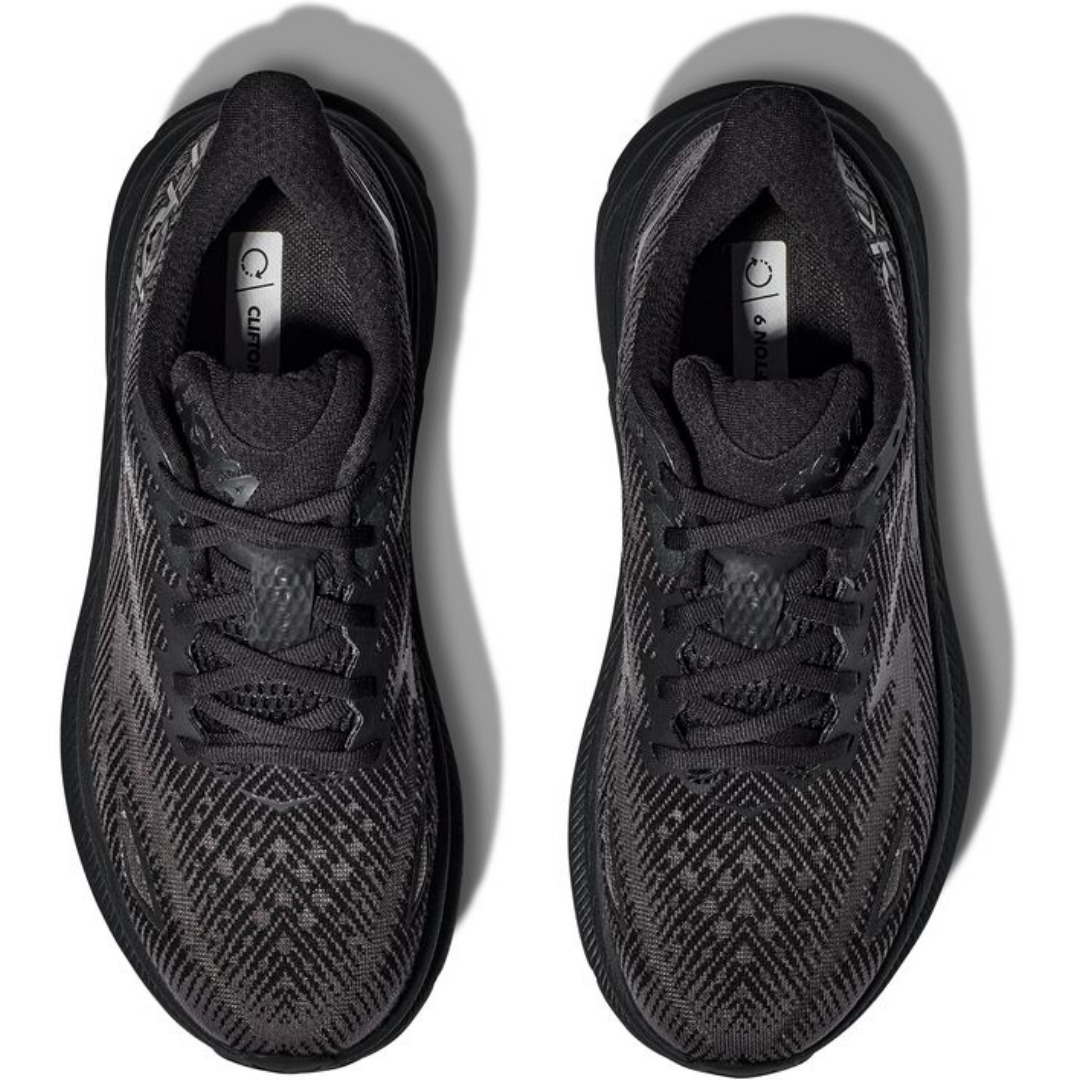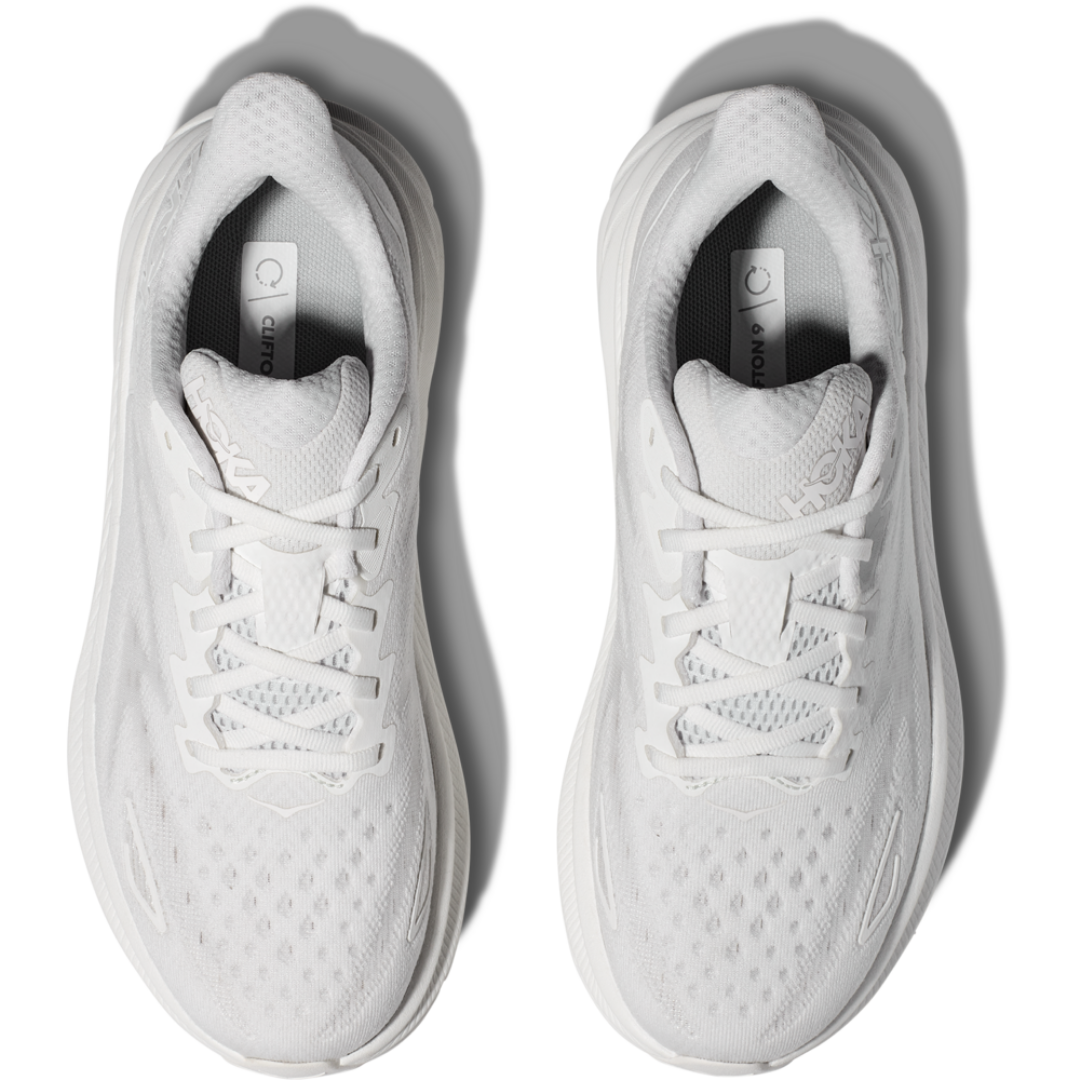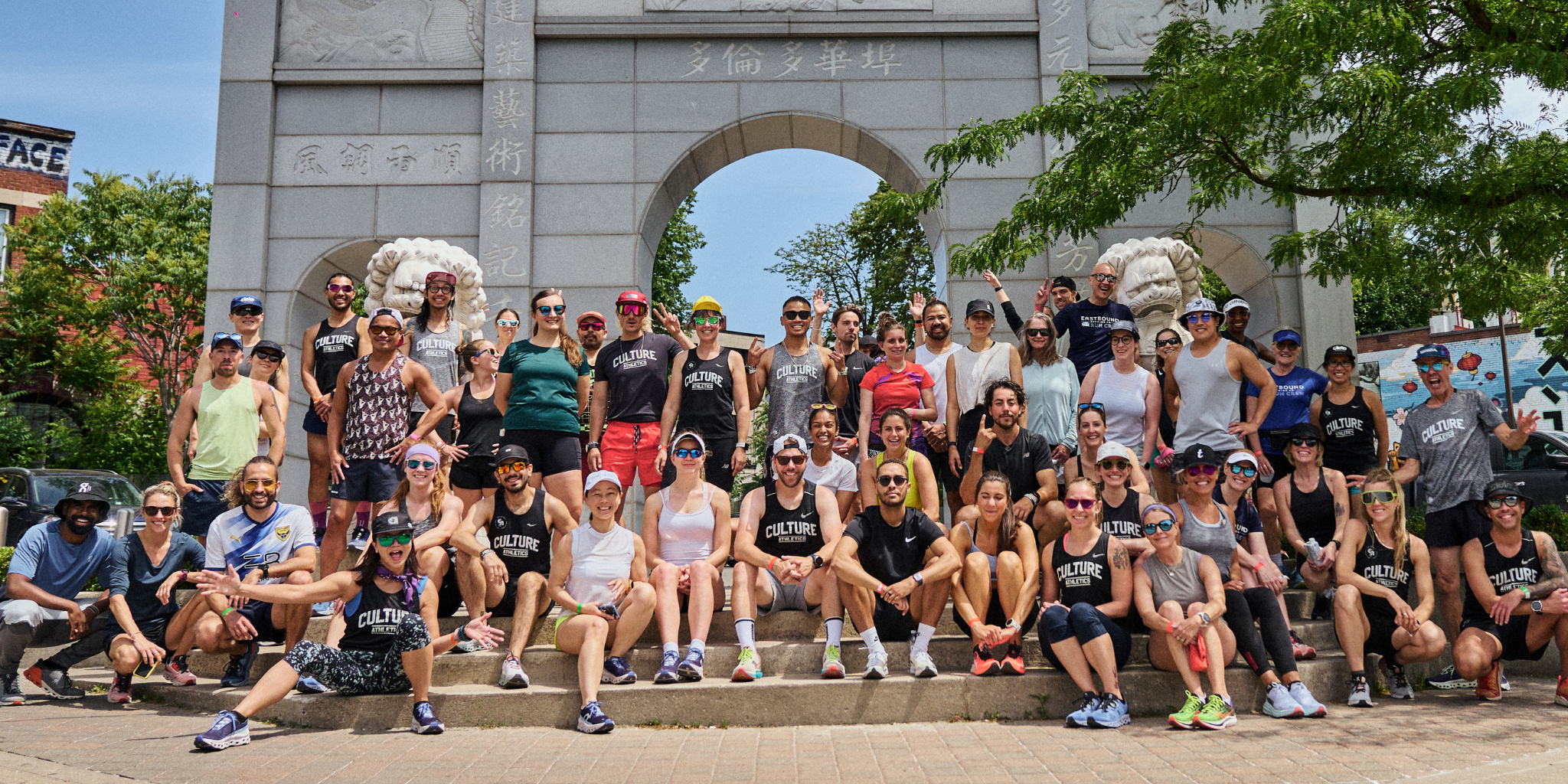By Seanna Robinson
One of the most popular questions I receive as a coach from people just starting or starting back up a running program is: what type of shoes do I need?
My answer is usually “that depends”. There is not just one “perfect” running shoe for each person. As we vary in what we’re setting out to do on our runs, our tools (types of shoes) should vary as well. So, here’s how I look at footwear and my approach to building out a roster of shoes that addresses any runner’s needs.
Your Go-To Workhorse
When just starting out, your running probably doesn’t vary too much from one day to the next. You are getting used to running consistently, and you are training your muscles and bones and ligaments to adapt to the pressures and demands of running. In this phase, you do not need more than one pair of shoes for the task. A good training shoe will fit your needs for quite a while, as this phase of your running is the base of the pyramid. Many people stay here – continuing to run consistently and happily as a means to just get out and get exercise, stay fit for other activities, or for their mental health. For this type of running, you would want a shoe that feels comfortable, fits your foot type (wide, skinny, high arch, flat arch, etc...) and has a good combination of cushioning and stability that works for you. (1st pair)
This would usually be a Daily Trainer or Light-Weight Trainer. These shoes have a nice balance between cushion, weight and support. They’re designed to take a lot of mileage and make sure you enjoy yourself along the way.
Neutral Examples:
Saucony Ride or Saucony Kinvara
Stability Examples:
Your Long-Run Hero
If you start training for a longer race like a half marathon or marathon, you will find you are suddenly doing a lot more running, including the famous “Long Run”. Now you might want to throw a second model of cushioned training shoes into the mix. Consistent pounding and pressure on your feet can take its toll, and just a slight change in the structure and cushion/stability ratio of your shoes from day to day can help to vary the stress enough to prevent certain pains and strains.
(2nd pair)
This is usually a more cushion oriented Daily Trainer, or a High-Cushion Trainer.
Neutral Examples:
Stability Examples:
Something for Your Speed Work
Another thing you might want to try once you have been running consistently for a number of months (or maybe even years), is to work on getting faster. Now you will probably be looking around for training programs and groups to run with as you introduce speedwork. That additional cushioning and stability which protected you over your slower kilometers could now be holding you back in terms of maximizing your speed during these high-tempo workouts. Also, when you’re running faster, your running shoe needs change slightly. Your biomechanics change as you shift more to your forefoot. In this case you could benefit from a more lightweight shoe, designed to allow your foot to maximize its force production.. This can come in the form of a more flexible shoe (that achieves this through natural movement) or a plated/rocker shoe (that uses their geometry/technology to improve your output and efficiency). Plated training shoes sometimes have either a carbon plate or a plastic plate. Carbon plated running shoes are more rigid (and often less comfortable) than plastic plated trainers -- that’s why there’s more plastic/TPU plated models emerging in the market.
(3rd pair)
This shoe is usually either a Lightweight Trainer or Performance Trainer. These shoes are specifically designed to balance speed with some durability.
Neutral Examples:
Saucony Endorphin Speed or Kinvara 11
Nike Zoom Fly 3, Air Zoom Tempo Next% or Pegasus Turbo 2
On Cloudflow
Stability Examples:
Neither Snow, Nor Sleet, Nor Rain...
This fleet of three pairs of shoes will take you far and in most cases is all you’ll need. The good news is that running shoes do not have a shelf life, but a wear-life, so if you’re rotating through three different pairs they’ll last three times as long (some studies have shown even longer). If you’re running through a cold winter there is the option to invest in a pair of waterproof or winter running shoes as well. These feature materials and technology to maintain traction on wet, icy and snowy conditions (not to mention keeping your toes warm during those extra-grueling winter long runs). I have always gotten by without these, but I can see the appeal.
(4th pair)
Neutral Examples:
Stability Examples:
Your Ace in the Hole -- AKA The Race Day Shoe
Finally, if you’ve been training seriously and want to shave seconds (or minutes -- depending on the race distance) off your race times, you might want to invest in a pair of racing shoes. Racing shoes have traditionally been known as “racing flats”. These shoes are designed to handle the force of high-effort racing, while letting the runner maximize their turnover and efficiency. They’re super lightweight, have very little cushion/support and usually have a shorter lifespan.
Over the past five (or so) years, a new genre of carbon plated racing shoes has emerged. These shoes feature a rocker shape and a super-lightweight, rigid carbon plate. This carbon plate is usually paired with (often sandwiched between) “super foams” -- foams that are very light, and very springy. The combination of the geometry of the rocker, the cushion/spring of the foam, and the rigidity of the plate, adds up to increased energy return, efficiency and SPEED. That being said, it takes time to train your body to make the most of these shoes, so don’t assume they’ll make you faster if you aren’t putting in the work. You would only use these shoes for races (and in some cases, maybe even only for your “A” races).
One caveat here: if your “A” race is a marathon, it’s a good idea to practice in them a bit first since they do change your biomechanics and you could risk straining certain muscles as you run faster and further than you ever have for the first time in a pair of shoes that changes your form. This is why some companies now offer a performance-trainer version of their premier carbon plated racers, so you can train your racing muscles and ligaments without “using up” your expensive shoes.
(5th or 6th pair)
Racing Flats
Carbon Plated Racing Shoes:
So that is my answer. You’re fine with one pair of shoes for running, or you can make use of up to six. It depends on your level and your needs. Or maybe it’s your wants, not your needs. I’m not judging though ;)
- Seanna




